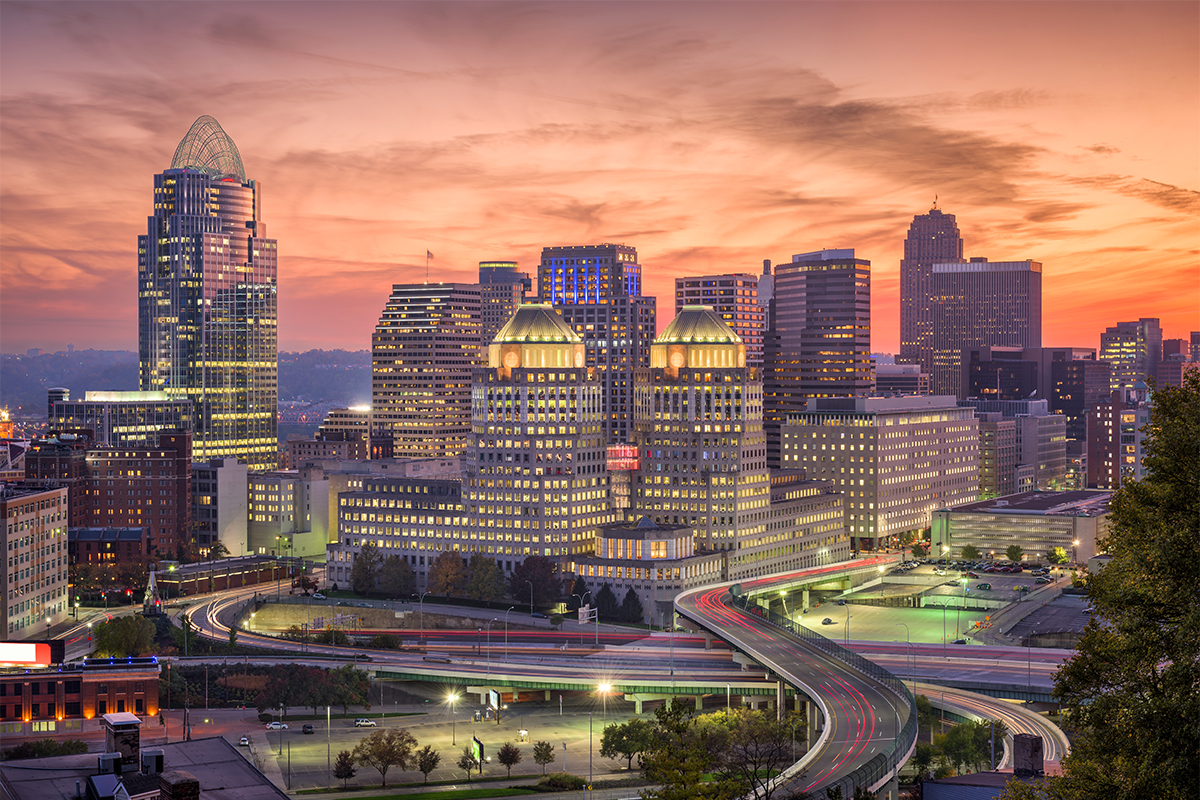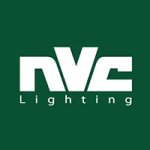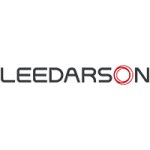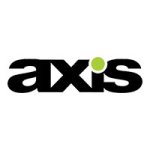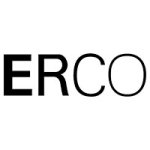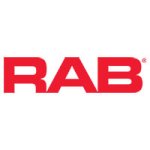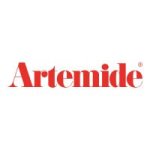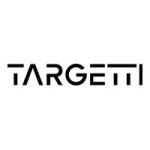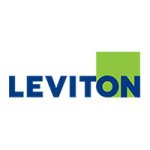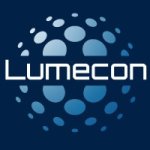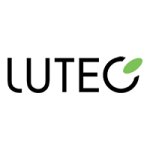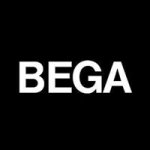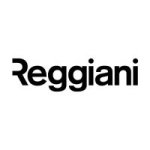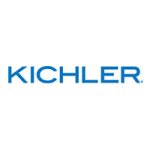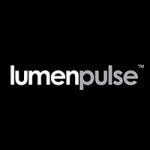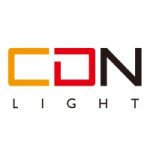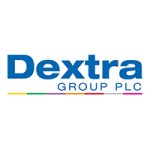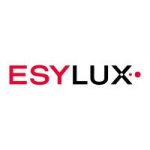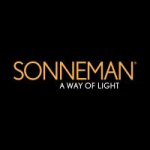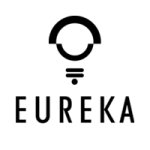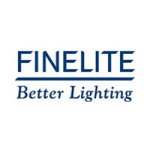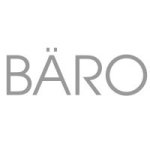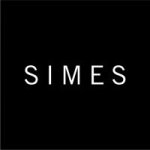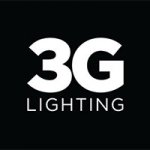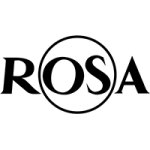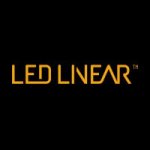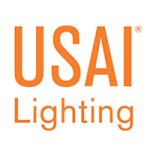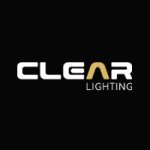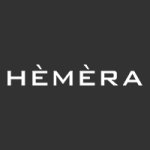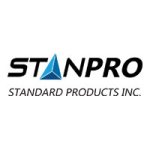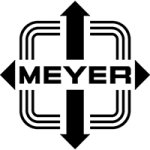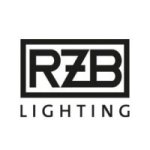Commercial lighting encompasses a broad range of lighting solutions tailored for non-residential spaces such as
offices,
retail stores,
hospitals,
hotels,
warehouses, educational institutions, and other commercial establishments. Commercial lighting systems can vary significantly depending on the specific requirements of the space, such as the size of the area, its function, the tasks performed within it, and aesthetic preferences. These systems may include overhead fixtures, task lighting, accent lighting,
emergency lighting, and controls. The primary function of commercial lighting is to provide adequate illumination for tasks, visibility, safety, and ambiance within a commercial space. Proper lighting can improve productivity and well-being in commercial settings. Adequate lighting levels and quality contribute to better visibility, reduced eye strain, and enhanced comfort for occupants. Effective lighting is essential for ensuring safety and security in commercial premises. Well-lit spaces deter criminal activities, reduce the risk of accidents, and facilitate emergency evacuation procedures. Lighting plays a crucial role in creating the ambiance and atmosphere of a commercial space. Well-designed lighting can enhance the aesthetics of the environment, highlight architectural features, and influence the mood of customers or employees. Commercial lighting installations must comply with building codes, energy efficiency regulations, and industry standards set by authorities to ensure safety, environmental responsibility, and energy conservation.
Types of commercial facilities
Commercial facilities can vary widely depending on the nature of the business, its size, and its specific requirements. Office buildings are primarily used for administrative or professional purposes. They can range from small office spaces to large corporate headquarters and can house businesses such as law firms, financial institutions, consulting firms, and tech companies. Retail stores are establishments where goods are sold directly to consumers. They can include department stores, specialty shops, supermarkets, convenience stores, and boutiques. Hotels and lodging provide temporary accommodation, typically on a short-term basis, to travelers and tourists. They can include hotels, motels, resorts, hostels, and bed and breakfasts. Restaurants and food services are engaged in preparing and serving food and beverages to customers. They include fast-food outlets, fine dining restaurants, cafes, food trucks, and catering services. Entertainment venues are designed to provide entertainment and leisure activities to customers. They can include movie theaters, amusement parks, sports stadiums, concert halls, casinos, and bowling alleys. Educational institutions are dedicated to providing education and training services. They can include schools, colleges, universities, vocational training centers, and tutoring centers. Financial institutions offer financial services such as banking, lending, investment, and insurance. They can include banks, credit unions, brokerage firms, and insurance agencies. Healthcare facilities provide medical services to patients. They can include hospitals, clinics, dental offices, urgent care centers, and medical laboratories. Industrial facilities are buildings or sites where goods are manufactured, processed, or assembled. They can include factories, warehouses, distribution centers, and industrial parks. Transportation facilities are involved in the movement of people and goods. They can include airports, seaports, train stations, bus terminals, and trucking depots.
Types of spaces to illuminate
Commercial lighting solutions cater to a diverse range of environments, including offices, conference rooms, corridors, lobbies, retail showrooms, warehouses, manufacturing facilities, outdoor parking lots, and more. Each space has unique lighting requirements based on its function, layout, and user preferences. Lighting in office spaces is essential for providing adequate illumination for tasks such as reading, writing, and working on computers. It also contributes to creating a comfortable and productive work environment. Conference rooms often require adjustable lighting levels to accommodate presentations, meetings, and discussions while maintaining a professional atmosphere. Corridors and lobbies typically require consistent and uniform lighting to ensure safe navigation and create a welcoming ambiance for visitors. Lighting plays a crucial role in showcasing products effectively and attracting customers in retail environments. Different types of lighting, such as accent lighting and task lighting, may be used to highlight merchandise and enhance the overall shopping experience. In industrial settings, lighting serves both functional and safety purposes, providing sufficient illumination for tasks such as inventory management, equipment operation, and assembly line work. Adequate lighting in parking lots enhances safety and security for pedestrians and vehicles, particularly during nighttime hours. Commercial lighting solutions are designed to meet these diverse needs effectively, incorporating factors such as energy efficiency, durability, and aesthetics to create well-lit and inviting environments conducive to their intended purposes.
Layered lighting
Commercial lighting addresses various lighting needs, including general illumination to provide overall visibility, task lighting to facilitate specific activities such as reading or working on a computer, accent lighting to highlight architectural features or merchandise displays, and ambient lighting to create a comfortable atmosphere. General illumination is aimed at providing overall visibility throughout a space. It ensures that the entire area is adequately lit for safe navigation and general activities. General illumination is usually achieved through overhead fixtures such as ceiling-mounted lights or recessed lighting. Task lighting is focused on illuminating specific areas where particular activities are performed, such as reading, writing, or working on a computer. It provides concentrated light to enhance visibility and reduce eye strain during these tasks. Task
lighting fixtures are often adjustable and may include
desk lamps,
under-cabinet lights, or directional spotlights. Accent lighting is used to highlight specific features within a space, such as architectural elements, artwork, or merchandise displays. It adds visual interest and draws attention to focal points, enhancing the aesthetics of the environment. Accent lighting fixtures may include
track lighting, wall-mounted fixtures, or adjustable spotlights. Ambient lighting works to create a comfortable and inviting atmosphere within a space. It typically provides soft, diffuse illumination that fills the room without causing glare or harsh shadows. Ambient lighting helps establish the overall mood and ambiance of the environment. Fixtures commonly used for ambient lighting include
wall sconces,
pendant lights, and indirect lighting solutions. By addressing these various lighting needs, commercial lighting solutions can effectively enhance the functionality, aesthetics, and comfort of different commercial environments, ranging from offices and retail stores to restaurants and hospitality venues.
Energy conservation
Energy efficiency emphasizes the importance of using lighting solutions that minimize energy consumption and reduce operational costs. There's a growing recognition of the importance of sustainability and reducing energy consumption in commercial settings. Businesses are increasingly seeking ways to minimize their environmental footprint and operate in a more eco-friendly manner. Commercial lighting solutions are adopting energy-efficient technologies, such as
LED lighting. The adoption of energy-efficient technologies like LED lighting in commercial settings aligns with broader sustainability goals, offering both economic and environmental benefits. It represents a proactive approach by businesses to improve energy efficiency, reduce costs, and minimize their ecological footprint. By transitioning to energy-efficient lighting solutions, businesses can significantly reduce their operating costs associated with lighting. Lower energy consumption means lower electricity bills, leading to long-term cost savings for commercial establishments. Energy-efficient lighting not only benefits businesses financially but also helps minimize their environmental impact. By reducing energy consumption and greenhouse gas emissions associated with electricity generation, businesses can contribute to mitigating climate change and promoting environmental sustainability.
Aesthetic appeal
In addition to functionality and energy efficiency, commercial lighting also addresses aesthetic considerations to enhance the visual appeal of commercial spaces. The strategic use of lighting can enhance the overall aesthetics of an environment by illuminating key elements such as decor, furnishings, and artwork. This involves selecting lighting fixtures and configurations that complement the overall design theme and architectural features of the space. The style of lighting fixtures can significantly impact the visual ambiance of a commercial space. Different fixture designs, such as recessed lights, pendant lights,
track lights, or
chandeliers, can evoke various atmospheres and cater to different design preferences. Within a commercial space, there are often focal points such as decor, furnishings, and artwork that contribute to its overall design aesthetic. Lighting can be used to highlight these elements, bringing them to the forefront and making them stand out to visitors and customers. Various lighting techniques and effects, such as accent lighting, task lighting, or dynamic lighting changes, can be employed to enhance the visual interest and atmosphere of commercial spaces. Instead of simply illuminating the entire space uniformly, designers strategically position lights to highlight specific elements and create a visually engaging atmosphere. Many commercial spaces boast unique architectural elements such as columns, arches, or intricate ceiling designs. Lighting can be strategically employed to accentuate these features, bringing them into focus and showcasing their aesthetic appeal. Within a commercial environment, there may be specific areas or elements intended to serve as focal points. Lighting can be used to create emphasis on these focal points, making them stand out amidst the surrounding space. By directing attention to key features, lighting helps guide the flow of movement and engagement within the environment, shaping the overall experience of visitors and customers. Lighting can be used to highlight product displays, drawing attention to featured items or promotional showcases. By illuminating merchandise effectively, lighting enhances its visibility and allure, making it more enticing to shoppers and encouraging browsing and purchase.
Atmospheric lighting
In commercial settings, such as retail stores, restaurants, offices, and other public spaces, lighting plays a crucial role in shaping the mood, atmosphere, and overall experience of customers, visitors, and employees. Lighting has a profound impact on human emotions and can influence mood. Bright, well-distributed lighting can create a cheerful and uplifting atmosphere, enhancing the mood of individuals within the space. Conversely, harsh or dim lighting can contribute to feelings of discomfort or fatigue. By providing lighting that is pleasant and conducive to positive emotions, commercial establishments can create an environment where customers and employees feel happy, relaxed, and engaged. Lighting sets the tone and atmosphere of a commercial space. Different lighting techniques, such as ambient lighting, accent lighting, or colored lighting, can be used to create various atmospheres ranging from cozy and intimate to bright and energetic. For example, warm lighting with soft tones may be used in a restaurant to create a relaxed and inviting atmosphere, while bright, dynamic lighting may be employed in a retail store to energize and stimulate shoppers. By carefully selecting and adjusting lighting elements, businesses can tailor the atmosphere of their space to align with their brand image and customer preferences. The overall experience of customers and visitors in a commercial environment is influenced by numerous factors, with lighting being a key component. A well-designed lighting scheme enhances the visual appeal of products, services, and surroundings, making the experience more enjoyable and memorable for individuals.
Regulatory compliance
Commercial lighting solutions must adhere to building codes, safety regulations, and energy efficiency standards established by governmental authorities and industry organizations. Compliance with these regulations ensures the safety, performance, and environmental sustainability of lighting installations in commercial buildings. Governmental authorities, such as local building departments and regulatory agencies, establish and enforce building codes and safety regulations applicable to commercial lighting installations. Industry organizations, such as the Illuminating Engineering Society (IES) and the International Association of Lighting Designers (IALD), may also develop guidelines and standards related to lighting design and performance. Compliance with the requirements set forth by these authorities and organizations ensures that commercial lighting installations meet minimum safety, performance, and environmental sustainability criteria. Building codes are sets of regulations that govern the design, construction, and occupancy of buildings. They often include requirements related to electrical systems, including lighting. Commercial lighting solutions must meet the specific requirements outlined in building codes to ensure the safety and integrity of the building's electrical infrastructure. Energy efficiency standards focus on promoting the use of lighting technologies and practices that minimize energy consumption and reduce environmental impact. Safety regulations pertain to measures aimed at preventing hazards and ensuring the well-being of building occupants. In the context of commercial lighting, safety regulations may encompass guidelines for proper installation practices, fire safety standards, and the use of materials that meet certain safety criteria. Adhering to safety regulations helps mitigate risks such as electrical shocks, fires, or other accidents associated with lighting systems.
Commercial spaces such as offices, retail stores, restaurants, hotels, healthcare facilities, and educational institutions require indoor lighting to provide illumination for various activities and purposes. Indoor lighting is essential for enabling various activities to take place within commercial spaces. In offices, adequate lighting ensures that employees can perform tasks such as reading, writing, typing on computers, and holding meetings effectively. In retail stores, lighting helps customers to navigate the space, examine products, and make purchasing decisions. Similarly, in healthcare facilities and educational institutions, proper lighting supports activities like patient care, learning, and collaboration among students and staff. Lighting significantly impacts the ambiance and visual appeal of commercial spaces. Well-designed lighting can create a welcoming and attractive environment that enhances the overall experience for occupants and visitors. For example, in restaurants and hotels, lighting plays a crucial role in setting the mood and atmosphere, influencing the perception of the space and the dining or lodging experience. In retail stores, strategic lighting can draw attention to merchandise displays and create an inviting shopping environment. Aesthetic lighting also contributes to the interior design concept of the space, complementing its style and theme. Beyond functionality and aesthetics, indoor lighting serves practical purposes that contribute to the efficient operation and safety of commercial spaces. Adequate lighting levels ensure that occupants can move around safely, reducing the risk of accidents and injuries. Moreover, in emergency situations such as power outages or evacuations, well-planned
emergency lighting systems provide essential illumination to guide occupants to exits and facilitate orderly evacuation. Additionally, energy-efficient lighting solutions help commercial establishments to reduce electricity consumption and operating costs while meeting regulatory requirements and sustainability goals.
Outdoor lighting is essential for commercial properties to ensure safety and security, facilitate wayfinding, enhance aesthetics, and accommodate outdoor events. By strategically illuminating exterior spaces, commercial property owners can create a welcoming and visually appealing environment while prioritizing the well-being and satisfaction of employees, customers, and visitors.
Outdoor lighting is crucial for enhancing safety and security on commercial properties. By illuminating parking lots, walkways, building perimeters, and other outdoor areas, it improves visibility, reducing the risk of accidents and deterring criminal activities such as theft, vandalism, and trespassing. Well-lit outdoor spaces create a sense of security for employees, customers, and visitors, making them feel safer when navigating the property during the evening or nighttime hours. Outdoor lighting helps guide pedestrians and vehicles safely through commercial properties, including parking lots, pathways, and entrances. Clear illumination of walkways and directional signage assists visitors in navigating the premises, especially in low-light conditions or after dark. Properly lit parking lots also improve visibility for drivers, reducing the likelihood of accidents and facilitating efficient traffic flow. Outdoor lighting plays a significant role in enhancing the aesthetics of commercial properties by highlighting architectural features, landscaping elements, and signage. Well-designed lighting accents can draw attention to the unique design elements of buildings, creating visual interest and enhancing the curb appeal of the property, particularly at night. Illuminating landscaping features such as trees, shrubs, and flower beds adds depth and dimension to the outdoor environment, enhancing its overall attractiveness. Commercial properties often host outdoor events such as gatherings, performances, or dining experiences on patios, terraces, or courtyards. Outdoor lighting is essential for creating a welcoming and inviting atmosphere during such events, allowing them to extend into the evening hours. Properly illuminated outdoor spaces not only ensure the safety and comfort of participants but also enhance the ambiance and enjoyment of the event, contributing to a positive experience for attendees.
LED lighting
LED technology brings a range of unprecedented benefits and advantages to commercial lighting, transforming the way businesses illuminate their spaces. LED lights are highly energy-efficient, consuming significantly less electricity than traditional lighting sources such as incandescent or fluorescent bulbs. This efficiency translates to lower energy bills for commercial establishments, helping them save money on operating costs while reducing their carbon footprint. LED lights have an exceptionally long lifespan compared to traditional bulbs, lasting tens of thousands of hours. This longevity reduces the frequency of maintenance and replacement, saving businesses time and resources. LED lights are durable and robust, capable of withstanding shocks, vibrations, and harsh environmental conditions better than traditional lighting options. This reliability ensures consistent performance and minimizes downtime for commercial operations. LED technology offers flexibility in design and application, allowing businesses to customize lighting solutions to suit their specific needs and preferences. LEDs come in various shapes, sizes, colors, and lumen outputs, and can be integrated into fixtures of different styles and designs to achieve desired aesthetics. LEDs emit light in a specific direction, resulting in more focused and efficient illumination. This
directional lighting capability allows businesses to target light where it is needed, reducing wasted light and minimizing light pollution. LEDs illuminate instantly without any warm-up time, providing immediate brightness when switched on. This instantaneous lighting is advantageous in commercial settings where quick and reliable illumination is essential. Many LED fixtures are dimmable, offering businesses the flexibility to adjust brightness levels according to their needs and preferences. Dimmable LED lights provide greater control over lighting environments, allowing businesses to create the desired ambiance and save energy when full brightness is not required.
Spectral control
The spectral engineering capabilities of LEDs enable precise control over
color reproduction and
white light characteristics. LED manufacturers can manipulate the spectral power distribution (SPD) of their products to achieve desired lighting characteristics. By adjusting the relative intensities of different wavelengths of light, LEDs can produce light with specific
color temperatures and spectral qualities. This flexibility allows for the customization of lighting solutions to suit the unique requirements of different commercial environments. In applications such as retail, hospitality, and art galleries, where color accuracy is crucial, LED lighting can faithfully represent the intended colors of products, artwork, or architectural features. This ensures that colors appear vibrant and true to life, enhancing the visual appeal of the space and improving the customer experience. LED lights can produce white light with varying color temperatures, ranging from warm, yellowish tones to cool, bluish tones. By adjusting the SPD of LEDs, manufacturers can deliver white light in the most appropriate color temperature for a given application. For example, warm white light (lower color temperatures) may be preferred in hospitality settings to create a cozy ambiance, while cool white light (higher color temperatures) may be more suitable for task-oriented environments like offices or retail spaces. By leveraging this technology, businesses can create visually appealing environments, enhance product presentation, and improve the overall quality of light in their establishments.
The controllability of LED technology empowers designers to innovate and experiment with
smart lighting solutions that enhance user experience. LED lighting systems can be integrated with sensors, occupancy detectors, and other smart devices to automate lighting control based on occupancy, daylight levels, or predefined schedules. This integration enhances energy efficiency, reduces operational costs, and improves user experience by providing optimal lighting conditions when and where needed. With
smart control systems, LED lighting can adapt to specific tasks, activities, or user preferences in real-time. For example, in office environments, lighting can adjust based on the time of day, task requirements, or individual preferences to support employee well-being, productivity, and comfort. LED technology enables dynamic lighting effects such as color-changing, fading, and animation, which can be programmed and synchronized to enhance visual interest and engagement in commercial settings. These effects can be utilized in advertising displays, art installations, and interactive experiences to captivate audiences and create memorable impressions. LEDs can produce a wide spectrum of colors, and color temperature can be adjusted to mimic natural daylight or create specific ambiance. Designers can use color tuning to influence mood, highlight architectural features, or support branding efforts in commercial environments such as retail stores, restaurants, and hotels. Commercial LED lighting systems can be remotely monitored and managed through cloud-based platforms, allowing facility managers to monitor performance, troubleshoot issues, and optimize energy usage from anywhere. This remote access enhances operational efficiency and reduces maintenance costs for commercial properties.
The convergence of the
Internet of Things (IoT) and LED lighting is revolutionizing commercial lighting by introducing a new level of connectivity, intelligence, and functionality.
IoT-enabled LED lighting systems can be connected to a network, allowing for centralized control and management through web-based platforms or mobile applications. This level of connectivity enables real-time monitoring, remote operation, and precise adjustment of lighting parameters such as brightness, color, and scheduling. Facility managers can optimize energy usage, respond to changing occupancy patterns, and customize lighting environments to meet specific requirements, enhancing efficiency and flexibility in commercial spaces. IoT-enabled LED lighting fixtures can integrate various sensors and detectors, such as
occupancy sensors,
daylight sensors, and environmental sensors. These sensors collect data on occupancy levels, ambient light levels, temperature, and air quality, which can be analyzed to optimize lighting performance, improve comfort, and support building automation systems. For example, lighting can be automatically adjusted based on occupancy or daylight levels to save energy and enhance user experience. IoT-connected LED lighting systems generate vast amounts of data on lighting usage, energy consumption, and environmental conditions. This data can be analyzed using advanced analytics tools to gain valuable insights into building operations, occupant behavior, and space utilization. By leveraging data-driven insights, businesses can identify opportunities for energy savings, operational improvements, and space optimization, leading to more informed decision-making and better performance. IoT-enabled LED lighting can seamlessly integrate with other building systems and
IoT devices, such as HVAC systems, security systems, and
smart sensors. This integration allows for coordinated operation and interoperability between different systems, enabling enhanced automation, efficiency, and responsiveness in commercial buildings. For example, lighting, heating, and cooling systems can work together to optimize comfort and energy usage based on occupancy and environmental conditions. IoT-connected LED lighting can enhance the user experience in commercial spaces by providing personalized and adaptive lighting environments. Occupants can control lighting settings, access information, and interact with the environment using intuitive interfaces such as mobile apps or voice commands. Customizable lighting scenes, dynamic effects, and interactive features create engaging and comfortable spaces that cater to individual preferences and activities, improving satisfaction and productivity.
The marriage between the Internet of Things and LED lighting is driving the concept of
human-centric lighting in commercial spaces, aiming to enhance the well-being, productivity, and comfort of occupants by aligning lighting environments with their biological rhythms and needs. IoT-based smart LED lighting systems can dynamically adjust color temperature and intensity throughout the day to mimic natural daylight patterns. This synchronization with the human circadian rhythm helps regulate sleep-wake cycles, boost alertness, and improve mood and productivity. By providing appropriate lighting conditions at different times of the day,
human centric lighting promotes better health and well-being for occupants in commercial spaces. IoT-enabled LED lighting allows for personalized lighting experiences tailored to individual preferences and activities. Occupants can control lighting settings, such as color temperature, brightness, and ambiance, through intuitive interfaces like mobile apps or voice commands. This level of personalization enables occupants to create lighting environments that suit their specific needs and enhance their comfort and satisfaction. IoT-connected
smart lighting systems can create dynamic lighting scenarios that adjust in response to changing conditions or user inputs. For example, lighting levels can be automatically adjusted based on occupancy, daylight availability, or task requirements. Dynamic lighting scenarios enhance comfort, visibility, and energy efficiency in commercial spaces, providing optimal lighting conditions for different activities and situations. IoT-enabled smart lighting can integrate with other wellness solutions, such as biometric sensors, wearable devices, and health tracking platforms. By collecting data on occupant behavior, activity levels, and physiological responses, these integrated systems can optimize lighting environments to support occupant health and well-being. For instance, lighting can be adjusted based on individuals' stress levels, activity patterns, or circadian rhythms to promote relaxation, focus, or productivity. IoT-connected LED lighting generates valuable data on lighting usage, occupancy patterns, and environmental conditions. This data can be analyzed using advanced analytics tools to identify trends, patterns, and opportunities for optimization. By leveraging data-driven insights, businesses can continuously refine and improve their lighting strategies to better meet the needs and preferences of occupants, resulting in enhanced well-being, satisfaction, and performance.
Commercial lighting fixtures
Commercial lighting is delivered by various types of lighting fixtures and systems designed for use in commercial spaces such as offices, retail stores, restaurants, hotels, healthcare facilities, and educational institutions. Recessed lighting fixtures are installed into the ceiling, providing a clean and streamlined appearance. They distribute light evenly across the space and are often used for general illumination in offices, lobbies, corridors, and retail environments. Surface-mounted fixtures are attached directly to the ceiling or wall surface. They come in a variety of styles, including flush mounts and semi-flush mounts, and are suitable for general and task lighting in areas where recessed lighting is not feasible or desired. Pendant lights hang from the ceiling on a cord, chain, or rod, adding visual interest and ambiance to commercial spaces. They are often used in reception areas, dining areas, conference rooms, and retail settings to provide both ambient and accent lighting. Track lighting systems consist of tracks mounted on the ceiling or walls, with adjustable fixtures that can be moved along the track to direct light where needed. They offer flexibility in lighting design and are commonly used for accent lighting in retail stores, galleries, and museums. Wall sconces are mounted on walls and provide both functional and
decorative lighting. They come in various styles and can be used for ambient, task, or accent lighting in corridors, stairwells, hallways, and exterior facades.
Under-cabinet lights are installed beneath kitchen cabinets or shelves to provide task lighting for countertop surfaces. They illuminate workspaces for activities such as food preparation, cooking, and reading recipes. Floodlights and spotlights are outdoor lighting fixtures designed to illuminate large areas or highlight specific architectural features, signage, or landscaping elements. They are commonly used in parking lots, building facades, and outdoor recreational spaces. Emergency lighting fixtures are installed to provide illumination during power outages or emergencies, ensuring safe evacuation and navigation within commercial buildings. They include
exit signs, emergency
exit lights, and backup battery-powered lights strategically placed throughout the building.
Troffer and panel lights
LED troffers and
LED panel lights are popular choices for commercial lighting, especially in office spaces, retail stores, schools, and healthcare facilities.
LED troffers are rectangular light fixtures typically recessed into the ceiling grid, forming a grid-like pattern. They are commonly used for general illumination in commercial settings, providing even and uniform light distribution across the space. LED
troffers are available in various sizes, including 1x4, 2x2, and 2x4 feet, to fit standard ceiling grid dimensions.
LED panel lights feature a sleek and modern design with a low profile. In edge-lit LED panel lights, the LEDs are positioned along the edges of the panel. Light emitted from these edge-mounted LEDs is directed towards the center of the panel, where it is evenly distributed and diffused by the light guide plate. This design creates a uniform and glare-free illumination across the entire panel surface. In
backlit LED panel lights, the LEDs are mounted behind the panel, facing away from the diffuser. Light emitted from these rear-mounted LEDs passes through the translucent panel material and is diffused evenly across the surface. Backlit LED panel lights typically have a thicker profile compared to edge-lit panels but still offer uniform and diffused illumination. They are often used in applications where higher light output is required or where a specific lighting effect is desired.
LED downlights are a real workhorse in commercial buildings. LED downlights serve as primary sources of general illumination in commercial spaces. Installed in ceilings, they provide widespread and uniform lighting throughout the area. Whether it's an office, retail store, or hotel lobby, LED downlights offer consistent brightness that ensures adequate visibility for everyday tasks and activities. LED downlights are also commonly employed for accent lighting purposes in commercial settings. By directing light onto specific objects, architectural features, or merchandise displays, they help create focal points and draw attention to key elements within the space. Whether it's highlighting artwork, signage, or product showcases, LED downlights add visual interest and enhance the overall ambiance. In addition to general and accent lighting, LED downlights play a crucial role in providing task lighting for various activities in commercial buildings. Task lighting is tailored to specific tasks such as reading, writing, or working on computers. LED downlights can be strategically positioned to deliver focused illumination to workstations, countertops, or conference tables, ensuring optimal visibility and productivity for occupants. The versatility of LED downlights allows them to fulfill multiple lighting functions within commercial buildings, making them indispensable components of lighting design. Whether it's illuminating large open areas, highlighting architectural details, or providing focused task lighting, LED downlights offer efficient and effective solutions for enhancing the functionality, aesthetics, and comfort of commercial spaces. Their ability to adapt to different lighting needs makes them a staple in modern commercial lighting design.
LED track lights
LED track lights are favored in commercial applications for their flexibility, adjustability, and directional capabilities. Track lighting systems consist of a track, typically mounted on the ceiling or wall, along which multiple light fixtures, or heads, can be attached and moved. These LED fixtures are adjustable along the track, allowing for easy manipulation and positioning to cast light in desired directions. This flexibility makes track lighting ideal for commercial spaces where lighting needs may change frequently or where specific areas need to be highlighted. The ability to adjust the position and angle of the fixtures enables track lighting to provide directional lighting, directing light precisely where it's needed. This is particularly useful for highlighting architectural features, merchandise displays, artwork, or other focal points in commercial environments such as retail stores, galleries, or museums. Track lighting is also effective for providing task lighting in commercial spaces where focused illumination is required for specific activities. By adjusting the track heads, users can direct light onto work surfaces, countertops, or workstations, enhancing visibility and productivity. This makes track lighting suitable for offices, studios, or work areas in retail or hospitality settings. Track lighting systems offer flexibility and adaptability in lighting design, allowing for customization to suit the unique needs and requirements of different commercial spaces. Fixtures can be easily added, removed, or repositioned as needed, making track lighting a versatile and cost-effective lighting solution for both new construction and renovation projects.
LED ceiling lights are designed to be installed directly onto the surface of the ceiling. This is particularly advantageous in areas where space is limited, such as offices, retail stores, and restaurants, allowing for efficient utilization of the available area.
Flush mount ceiling lights sit flush against the ceiling, creating a seamless and compact appearance.
Semi-flush mount ceiling lights have a slight gap between the fixture and the ceiling, offering a stylish compromise between flush mounts and more elaborate pendant lights. Ceiling lights provide even and consistent illumination across the entire space, ensuring optimal visibility and comfort for employees, customers, and visitors. This uniform lighting distribution enhances safety and productivity in commercial environments. LED ceiling lights come in a variety of designs, styles, and sizes, offering businesses the flexibility to choose fixtures that complement their interior decor and branding. Whether it's sleek and modern designs for contemporary spaces or more traditional fixtures for heritage buildings, there are options to suit every commercial setting.
Pendant lights
Pendant lights are lighting fixtures that hang from the ceiling by a cord, chain, or rod, typically suspended at varying heights. They come in a wide range of designs, shapes, sizes, and materials, allowing for customization to match the interior decor and design theme of the environment. Whether it's a sleek and modern pendant in a contemporary office or a decorative pendant with intricate detailing in a boutique store, pendant lights can enhance the ambiance and visual appeal of the space. In addition to their decorative function, pendant lights are also practical for providing task lighting in commercial settings. Depending on their design and placement, pendant lights can offer focused illumination for specific tasks or activities. For example, in restaurants or bars, pendant lights over dining tables or counters can provide targeted lighting for reading menus or food preparation. In retail stores, pendant lights can highlight merchandise displays or checkout counters, drawing attention to key areas and enhancing the shopping experience. Pendant lights can also contribute to setting the ambiance and mood in commercial spaces. Whether it's creating a cozy and intimate atmosphere in a restaurant or a bright and energizing environment in a retail store, pendant lights offer versatility in achieving various lighting effects.
Chandelier lights
Chandeliers are synonymous with luxury and refinement, instantly adding a touch of glamour and sophistication to any environment. Their intricate designs, often featuring crystal or glass elements, intricate metalwork, and decorative accents, make them focal points in interior spaces. Chandelier lights elevate the aesthetic appeal of commercial establishments, creating a sense of grandeur and opulence that enhances the overall ambiance. Chandeliers are eye-catching fixtures that command attention and leave a lasting impression on visitors. Their impressive size, intricate details, and sparkling illumination captivate observers and contribute to the visual identity of the space. Whether it's a grand chandelier in a hotel lobby, an elegant fixture in a ballroom, or a statement piece in a restaurant dining area, chandeliers make a powerful design statement that reinforces the brand image and elevates the perceived value of the establishment. In addition to their decorative function, chandeliers also serve a practical purpose by providing ambient lighting in commercial spaces. Their multiple bulbs or candles emit a soft and diffused light that illuminates the surroundings evenly, creating a warm and inviting atmosphere. Chandeliers contribute to the overall ambiance of the space, whether it's creating a romantic setting in a fine dining restaurant, a luxurious feel in a hotel lobby, or a festive mood in a ballroom for special events.
Wall sconces
Wall sconces are versatile lighting fixtures that can effectively fulfill various lighting needs in commercial spaces. Wall sconces can contribute to ambient lighting by providing overall illumination that fills the space with a warm and inviting glow. Placed strategically along walls, sconces can help to distribute light evenly throughout the room, reducing harsh shadows and creating a comfortable atmosphere. In areas such as corridors, hallways, or reception areas, wall sconces can serve as primary sources of ambient lighting, ensuring that the space feels welcoming and well-lit. Wall sconces are also effective for accent lighting, which is used to highlight specific architectural features, artwork, or decorative elements within a space. By directing light upward, downward, or in specific directions, wall sconces can draw attention to focal points and add visual interest to the surroundings. Whether it's illuminating a display wall in a retail store, highlighting a feature wall in a hotel lobby, or showcasing artwork in a gallery, wall sconces can accentuate key elements and enhance the overall ambiance. In addition to ambient and accent lighting, wall sconces can serve as sources of task lighting in commercial spaces where focused illumination is required for specific activities. Mounted near workstations, desks, or seating areas, sconces can provide targeted light for reading, writing, or other tasks. By positioning sconces at appropriate heights and angles, users can enjoy optimal visibility and comfort while performing tasks such as reading documents, using computers, or conducting meetings.
LED strip lights, including
COB LED strip lights, SMD
LED strip lights, and
LED neon flex, are versatile lighting solutions that can be adapted to various commercial lighting applications, including ambient lighting, accent lighting, task lighting, decorative lighting, display lighting, and signage. LED strip lights are often used for general ambient lighting in commercial spaces such as offices, retail stores, restaurants, and hotels. Installed along ceilings, walls, or architectural features, they provide even and uniform illumination that enhances the overall brightness and ambiance of the environment. LED strip lights are ideal for accent lighting, where specific areas or objects within a space are highlighted to create visual interest. They can be used to accentuate architectural details, product displays, artwork, or signage in retail stores, museums, galleries, and exhibition spaces, drawing attention and adding depth to the surroundings. LED strip lights are effective for task lighting applications where focused illumination is required for specific activities or work areas. Mounted under cabinets, shelves, or desks, they provide targeted light for tasks such as reading, cooking, writing, or working on computers in offices, kitchens, laboratories, and workshops. LED strip lights offer endless possibilities for decorative lighting in commercial spaces, allowing designers to create custom lighting effects and ambiance. They can be used to outline architectural features, create patterns or shapes on walls or ceilings, or add color and visual interest to interior design elements such as bars, counters, or furniture in restaurants, bars, clubs, and entertainment venues. LED strip lights are commonly used for illuminating product displays, retail shelving, or merchandise showcases in retail stores, showrooms, and exhibitions. Their compact size and flexibility make them ideal for highlighting products, enhancing visibility, and attracting customers' attention to specific areas or products within the store. LED strip lights are often integrated into signage and branding elements to create eye-catching displays and enhance brand visibility. They can be used to backlight signs, letters, logos, or graphics on building facades, storefronts, or interior spaces, making them stand out and increasing brand recognition for businesses and commercial establishments.
Commercial facilities with high ceilings require lighting fixtures that can effectively illuminate the space from a considerable height. High bay LED lights are specifically designed for mounting at elevated positions, allowing them to cast light downward and evenly distribute illumination throughout the space. They are commonly used for illuminating large indoor spaces such as warehouses, manufacturing plants, distribution centers, gymnasiums, retail stores, and industrial facilities. High bay lights are extensively used in warehouses and distribution centers to illuminate storage areas, aisles, and loading docks. They provide bright and even illumination across the entire facility, allowing workers to safely navigate the space, locate inventory, and perform tasks efficiently. Retail stores and supermarkets utilize high bay lights to illuminate large retail spaces, aisles, and product displays. These fixtures create a well-lit and inviting shopping environment for customers, enhancing visibility and highlighting merchandise to attract attention and facilitate purchasing decisions. High bay lights are commonly installed in gymnasiums, sports arenas, and recreational facilities to provide ample lighting for indoor sports activities, events, and competitions. Convention centers and exhibition halls utilize high bay lights to illuminate large event spaces, exhibit halls, and conference rooms. These fixtures provide bright and consistent lighting for trade shows, conventions, conferences, and other events, ensuring optimal visibility for attendees, exhibitors, and presenters. In cold storage facilities and refrigerated warehouses, high bay lights are used to provide reliable lighting in low-temperature environments. They are designed to withstand extreme temperatures and provide consistent illumination, ensuring safety and productivity for workers handling perishable goods.
Commercial facilities use a variety of types of
low bay lighting fixtures to provide efficient, uniform, and visually appealing illumination in indoor spaces with lower ceilings. Linear low bay lights such as
LED tri-proof lights,
LED batten lights,
LED wraparound lights, and
LED strip fixtures are long and narrow fixtures that commonly used in areas with lower ceilings such as retail stores, offices, warehouses, and manufacturing facilities. Linear low bay lights provide uniform illumination along aisles, corridors, workstations, and shelving areas. Round low bay lights are circular fixtures that are often surface-mounted or pendant-mounted from the ceiling. They come in various sizes and wattages and are suitable for applications such as retail spaces, grocery stores, showrooms, and small warehouses.
LED flood lights are indispensable for
commercial outdoor lighting. They are designed to provide powerful and uniform illumination across outdoor spaces such as parking lots, building exteriors, and walkways. Their bright and even light distribution enhances visibility, improves safety, and deters potential security threats such as vandalism, theft, or trespassing. In commercial settings, where safety and security are paramount, LED floodlights help create a well-lit environment that instills confidence and reassurance among employees, customers, and visitors. LED floodlights contribute to the visual appeal and aesthetics of commercial outdoor spaces, enhancing their overall appearance and attractiveness. Whether it's highlighting architectural facades, landscaping features, or outdoor signage, LED floodlights add depth, dimension, and visual interest to the environment, making it more inviting and memorable for customers, employees, and visitors. Well-designed outdoor lighting with LED floodlights can create a positive impression and reinforce the brand image of commercial establishments.
Wall packs
Wall packs are outdoor lighting fixtures that are typically mounted on exterior walls of buildings to provide illumination and security lighting for outdoor spaces. Wall packs are designed to emit a broad and uniform beam of light, making them suitable for providing general illumination in outdoor areas such as building perimeters, walkways, parking lots, or loading docks. Their bright and even light distribution helps to improve visibility and safety, especially during nighttime hours or in low-light conditions. In addition to general illumination, wall packs also serve as security lighting fixtures, helping to deter criminal activities such as theft, vandalism, or trespassing. Their bright illumination and wide coverage area make it difficult for unauthorized individuals to hide or carry out illicit activities around the perimeter of the building. Wall packs contribute to creating a safe and secure environment for employees, customers, and visitors by enhancing visibility and deterring potential threats.
Pedestrian scale lights
Pedestrian scale lights are outdoor lighting fixtures specifically designed for illuminating pedestrian areas and walkways in commercial settings. They are designed to provide focused illumination at ground level, ensuring optimal visibility and safety for pedestrians walking in commercial areas such as sidewalks, plazas, courtyards, and pedestrian pathways. Unlike taller pole-mounted
area lights or streetlights,
pedestrian scale lights are positioned at a lower height to effectively light pedestrian areas without causing glare or discomfort. Pedestrian scale lights are often designed with a human-centric approach, considering factors such as pedestrian comfort, visual comfort, and ambiance. They typically feature a diffused light distribution and minimal glare to create a comfortable and inviting atmosphere for pedestrians, encouraging them to linger and enjoy the outdoor environment. Pedestrian scale lights come in a variety of styles, designs, and finishes to complement the architectural style and aesthetic theme of the commercial space. Pedestrian scale lights encompass a variety of lighting fixtures.
Post top lights are fixtures mounted on top of poles or posts, typically at a lower height than traditional streetlights.
Bollard lights are short, sturdy, and vertical fixtures mounted on short posts or pillars. They are commonly used to mark pathways, sidewalks, and pedestrian crossings in commercial areas.
Pathway lights are fixtures designed specifically for illuminating pathways, trails, and walkways in commercial landscapes.
Step lights are fixtures installed along stairs, ramps, or steps to provide illumination and enhance safety for pedestrians navigating changes in elevation. They are commonly used in commercial settings such as entrances, outdoor seating areas, and pedestrian bridges.
Area lights
Area lights are outdoor lighting fixtures mounted on poles to provide widespread illumination for large commercial outdoor areas such as parking lots, pathways, parks, or sports fields. Their elevated position ensures optimal coverage and visibility across the outdoor space. Their wide coverage area ensures that outdoor spaces are well-lit and safe for pedestrians, vehicles, and other users, particularly during nighttime hours or in low-light conditions.
LED area lights come in various types to suit different outdoor lighting applications and installation requirements. Shoebox lights are rectangular-shaped area lights commonly used in parking lots, roadways, and outdoor sports fields. They provide high-output illumination and wide coverage area, making them ideal for large outdoor spaces.
Street lights are pole-mounted area lights designed specifically for illuminating roadways, streets, and intersections. They provide uniform illumination along roads and sidewalks, enhancing visibility and safety for motorists and pedestrians.
Parking lot lights provide bright and uniform illumination across parking areas, ensuring optimal visibility for vehicles, pedestrians, and security cameras.
Parking lot lighting helps drivers navigate parking spaces, aisles, and entrances safely, reducing the risk of accidents or collisions, particularly during nighttime hours or in poorly lit areas.
Outdoor wall lights are lighting fixtures specifically designed for illuminating exterior walls of commercial buildings or outdoor spaces. They provide illumination along the exterior walls of commercial buildings, enhancing visibility and safety in outdoor areas such as entrances, walkways, patios, and parking lots. Outdoor wall lights help illuminate pathways, guide visitors, and deter potential security threats such as vandalism or theft. Outdoor wall lights contribute to the aesthetic appeal of commercial buildings by adding visual interest and highlighting architectural features. They come in various styles, designs, and finishes to complement the building's exterior decor and enhance its curb appeal. Whether it's a modern office building, a historic storefront, or a contemporary retail space, outdoor wall lights can be customized to match the architectural style and branding of the commercial establishment. Outdoor wall lights are versatile fixtures that can be installed in a variety of locations and orientations to meet different lighting requirements. They can be mounted flush against the wall, recessed into the wall cavity, or extended from the wall on mounting arms or brackets, allowing for flexibility in positioning and aiming the light output.
Commercial landscape lights
Commercial landscape lights are used to highlight various landscaping features such as trees, shrubs, flower beds, and garden sculptures. By strategically placing landscape lights around these features, designers can draw attention to their beauty and create focal points within the outdoor environment. Landscape lights accentuate the natural beauty of the landscape, adding depth, dimension, and visual interest to the surroundings. In addition to highlighting natural landscaping features, commercial landscape lights are also used to enhance architectural elements of commercial buildings or structures. They can be installed along building facades, pathways, or entrances to illuminate architectural details, columns, archways, or signage. Landscape lights help showcase the unique design elements of the property and reinforce its visual identity and branding. Landscape lights can be used to create soft, subtle lighting effects that enhance the overall atmosphere and ambiance of the space. Landscape lights also serve practical purposes such as safety and security in commercial outdoor environments.
